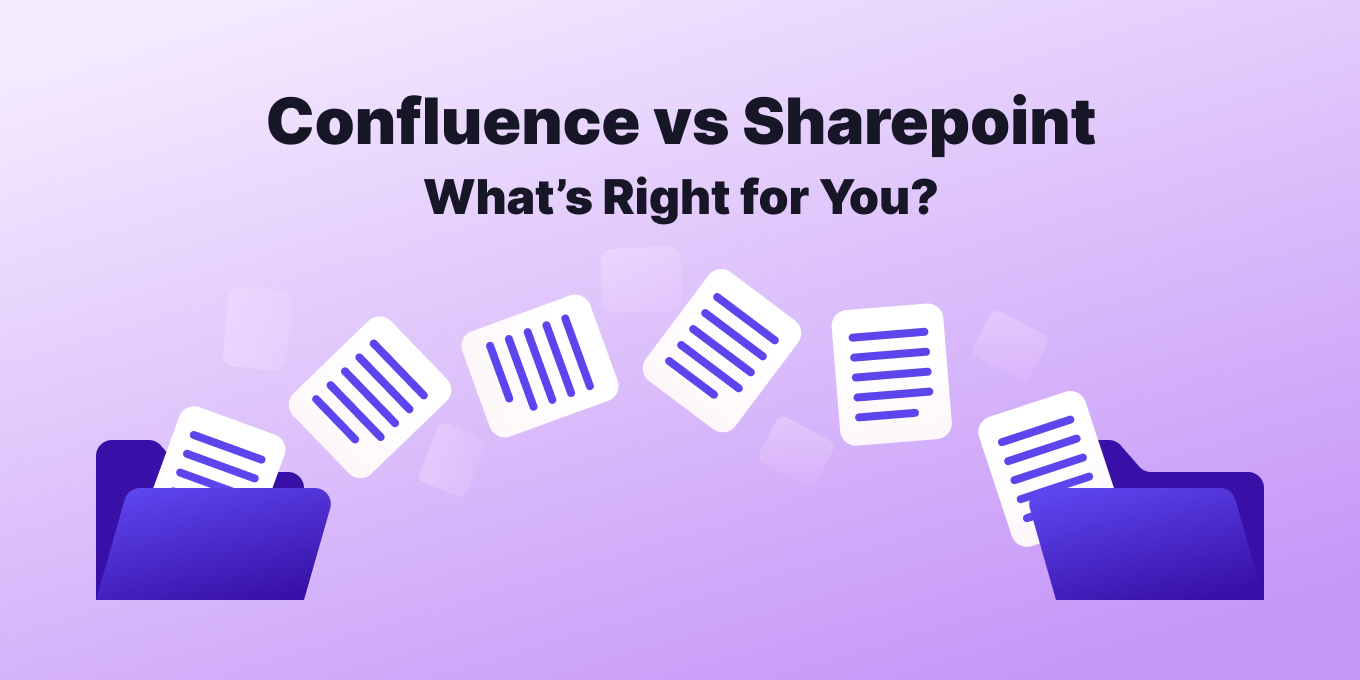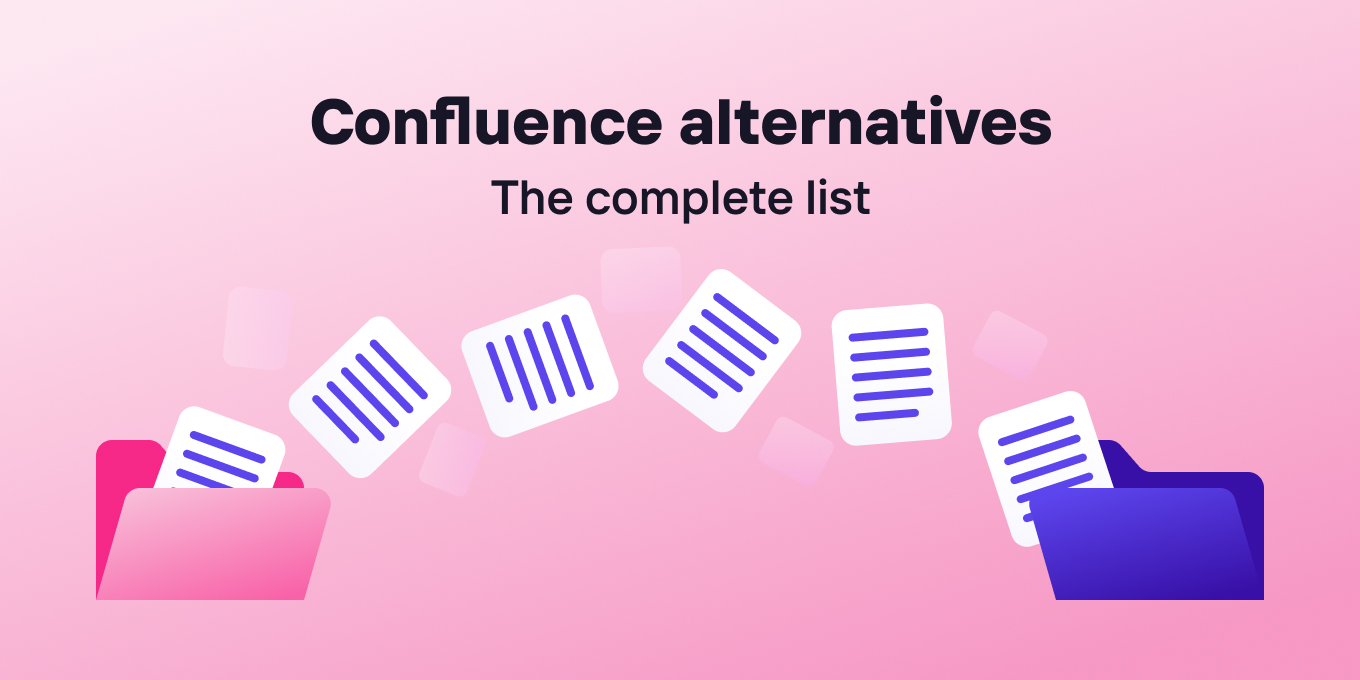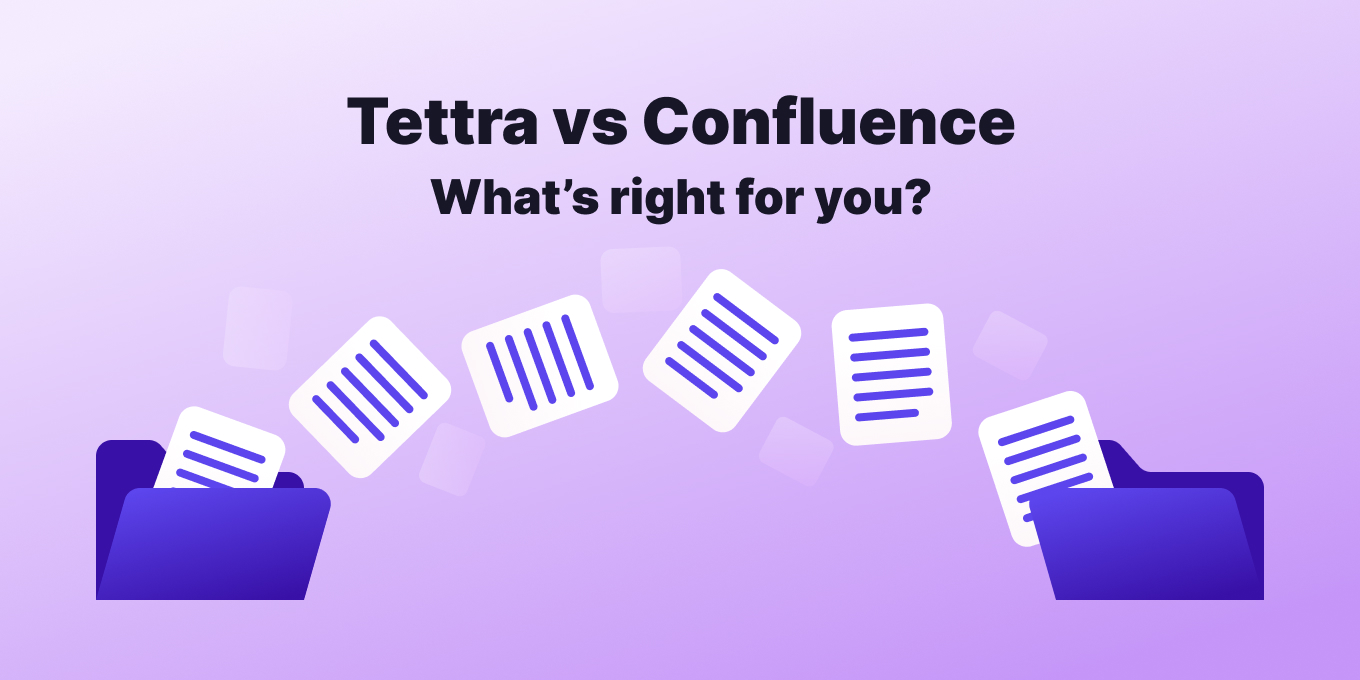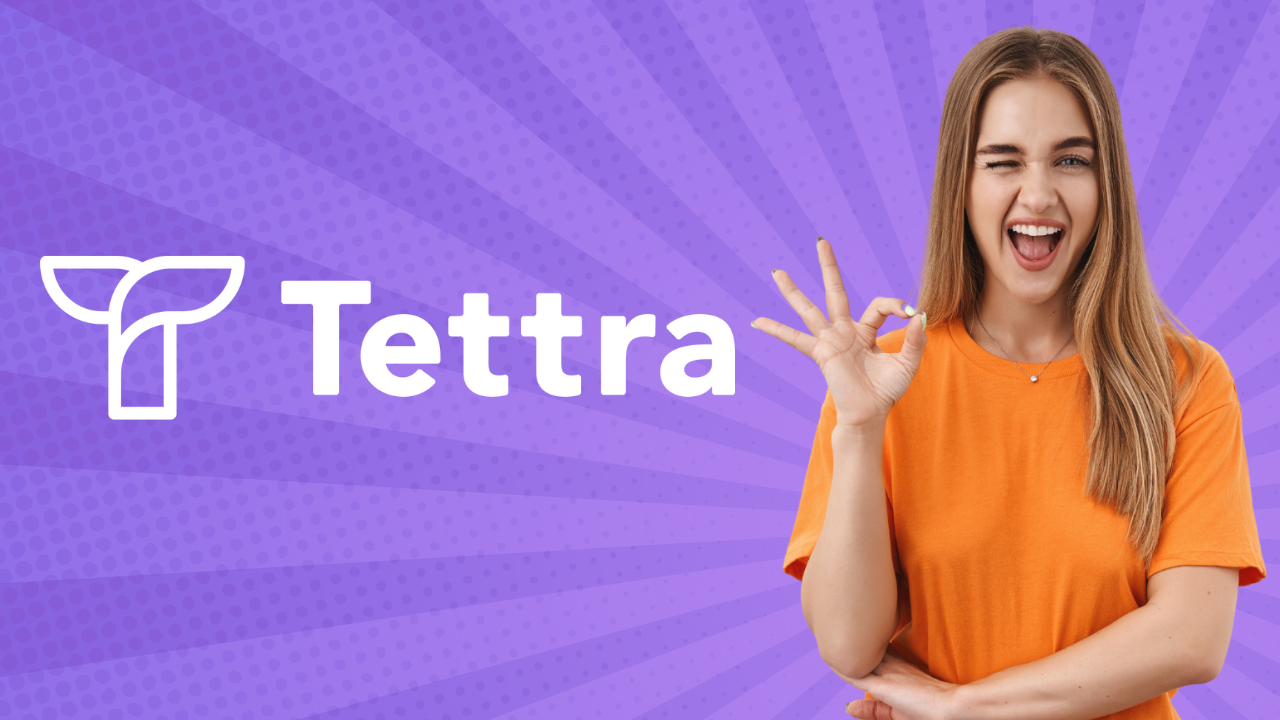TL;DR: Confluence is primarily used for knowledge management, while Sharepoint offers a broader features, like document management, an intranet, and other workplace collaboration tools.
Effective knowledge management is crucial for companies to remain competitive and innovative in the modern business environment. Confluence and Sharepoint offer features that promote knowledge management and collaboration, but the two have key differences.
Confluence and Sharepoint have a history of providing businesses with tools promoting collaboration and knowledge management.
This blog post will compare and contrast Confluence and Sharepoint concerning knowledge management, and show you why another knowledge base software — Tettra — may be the right option for you.
More about Confluence as a knowledge base:
Confluence & Sharepoint for Knowledge Management
Knowledge management is capturing, storing, and sharing knowledge within an organization. It involves identifying knowledge assets, developing strategies for managing them, and creating a culture of knowledge sharing.
In the context of knowledge management, both Confluence and Sharepoint can either help or hurt your organization’s knowledge-sharing efforts, depending on their implementation and usage.
Confluence and Sharepoint are tools designed to facilitate knowledge management by providing teams with a centralized location for creating and sharing information. Confluence is primarily used for knowledge management, while Sharepoint offers a broader range of features, including document management, an intranet, and other workplace collaboration tools, like microsites.
Ratings:
- The Sharepoint rating on G2 is 4.0/5.0
- The Confluence on G2 is 4.1/5.0
Confluence: What does it do?
Confluence is a collaboration tool created by Atlassian in 2004. It allows teams to create, organize, and share information in a centralized location. Confluence is primarily used for knowledge management and offers features such as creating and sharing pages, blogs, and files.
It also offers real-time editing and commenting, allowing teams to document information for projects. In addition, it integrates with other Atlassian products, such as Jira, for even more robust documentation and project management capabilities.
Confluence Use Case Example
The marketing team of a global consumer goods company uses Confluence to manage its content creation and publishing processes. They use Confluence to create and share content calendars, track approvals, and document brand guidelines. Confluence’s real-time editing and commenting features enable team members across different regions to collaborate effectively and ensure that all content is consistent with the company’s brand standards.
Confluence Features
- Creating and sharing pages, blogs, and files for knowledge management
- Real-time editing and commenting for collaboration
- Integration with other Atlassian products like Jira for comprehensive project management
- Customization options for design and functionality
- Content organization with labels, spaces, and pages
- Task management with to-do lists and calendars
- Reporting and analytics to track team performance
- Plug-ins and add-ons for extended functionality.
Pricing and Reviews
One of the downsides of Confluence is its price. It can be expensive for larger teams, and the pricing structure could be clearer.
- Team Collaboration at $10 per month.
- Team collaboration + calendars at $20 per month.
- Team collaboration + Q&A at $20 per month.
- All-in at $30 per month.
“Try before you buy. They have a free tier in cloud version so it’s always best that you try it before you sunk it. The pricing model is somewhat expensive and it’s important that you are sure this will suit your needs.” – G2
Pros:
- Integrates with other Atlassian products
- Real-time editing and commenting
Cons:
- It can be expensive for larger teams
- Limited search capabilities
- Clunkier interface for smaller companies
- No great integrations to other tools like Slack or link-sharing to other popular tools
Why use Confluence instead of SharePoint?
For several reasons, someone may choose to use Confluence instead of Sharepoint.
- Confluence primarily focuses on knowledge management, making it more user-friendly and efficient for teams creating and sharing knowledge.
- The Confluence real-time editing and commenting features make it easy for teams to collaborate and ensure everyone is on the same page.
- Confluence integrates well with other Atlassian products like Jira and other business communication software
- Confluence is more customizable than Sharepoint, offering more flexibility in terms of design and functionality.
If your organization focuses on knowledge management and collaboration, Confluence may be a more suitable tool than Sharepoint.
Sharepoint: What does it do?
Sharepoint is a comprehensive collaboration and document management platform created by Microsoft in 2001. It offers a variety of features, including document management, intranet building, and collaboration tools.
Sharepoint is a comprehensive collaboration and document management platform that offers features such as document libraries, a company intranet, and social networking tools. It also integrates with other Microsoft products, such as Office 365, for even more robust capabilities.
Sharepoint Use Case
A global financial services company uses Sharepoint to manage its document and content management processes. They use Sharepoint to create and store important documents such as policies, contracts, and compliance information accessible by employees across different locations. Sharepoint’s integration with other Microsoft products like Office 365 allows the company to enhance team communication and collaboration.
Sharepoint Features
- Intranet with customizable pages and templates
- Social networking tools, including blogs and commenting
- Integration with other Microsoft products like Office 365 for seamless collaboration
- Enterprise search capabilities for easy access to information
- Business process automation with workflow and forms
- Secure file sharing and access controls
- Mobile accessibility for on-the-go access to documents and information
- Document management with version control and check-in/check-out capabilities
Pricing and Reviews
One of the most significant advantages of Sharepoint is its integration with other Microsoft
products, making it an attractive option for companies using Microsoft software.
- Plan one at $5 per user per month.
- Plan two at $10 per user per month.
- Office 365 Enterprise E3 at $20 per user per month.
“Microsoft SharePoint has a steep learning curve for users, particularly those unfamiliar with Microsoft Office products. It is complex to configure, customize and manage.” – G2
Pros:
- A comprehensive set of features
- Integrates well with other Microsoft products
- Powerful document management capabilities
Cons:
- A steep learning curve for new users
- Limited customization options
Why use Sharepoint instead of Confluence?
For several reasons, someone may choose to use Sharepoint instead of Confluence.
- Sharepoint offers a comprehensive set of features that extend beyond knowledge management. This includes document management with version control and check-in/check-out capabilities, intranet building with customizable pages and templates, and enterprise search capabilities for easy access to information.
- Sharepoint integrates well with other Microsoft products like Office 365, a significant advantage for companies already using Microsoft software.
- Sharepoint’s business process automation capabilities with workflow and forms make it ideal for companies that require more advanced process management.
Overall, if your organization requires a comprehensive tool for document management, intranet building, and process automation, Sharepoint may be a more suitable option than Confluence.
Confluence vs Sharepoint FAQs
Which tool is better suited for SMBs?
Both Confluence and SharePoint offer distinct advantages for small and medium-sized businesses, but the best choice ultimately depends on your specific requirements.
Confluence is primarily used for knowledge management, providing an intuitive interface that many businesses find appealing. SharePoint offers a broader range of features, making it a comprehensive tool for document management, intranets, and process automation.
With SharePoint, businesses can benefit from features such as document management with version control and check-in/check-out capabilities. This ensures that team members can collaborate regularly and maintain a clear record of document changes.
Additionally, SharePoint offers the flexibility to create customizable intranet pages and templates, allowing businesses to establish a centralized hub for internal communication and collaboration. The enterprise search capabilities of SharePoint also simplify information retrieval, ensuring quick access to crucial data.
While Confluence excels in its user-friendly interface and knowledge management capabilities, it may not offer the same level of breadth as SharePoint. However, for small and medium-sized businesses seeking a streamlined tool focused primarily on knowledge management, Confluence may be the preferred choice.
Does SharePoint have a steep learning curve?
SharePoint’s additional features come with a steep learning curve. Therefore, organizations should carefully evaluate whether their team actually needs all of the additional functionality before committing to SharePoint solely because of its perceived power.
Is SharePoint suitable for larger enterprises?
SharePoint is particularly popular among large enterprises, making it a suitable choice for organizations of this scale. Its extensive features and capabilities cater to the complex needs of larger institutions.
What features does SharePoint offer that Confluence does not?
SharePoint offers a very extensive range of features, including visual customization options and advanced version management, which are not offered by Confluence. This makes SharePoint a more comprehensive and full-featured intranet platform.
How many users does SharePoint have worldwide?
SharePoint has over 190 million users worldwide, demonstrating its widespread adoption and popularity among organizations.
How long has SharePoint been around?
SharePoint has been around for over 20 years, indicating its longevity and experience in the market.
Are there any alternatives to Confluence and SharePoint?
Popular Confluence alternatives include Tettra, Google Docs, Notion, Trello, and Quip. These tools offer similar features to Confluence, such as document collaboration, real-time editing, and content organization. However, each tool has its own strengths and weaknesses, and it’s important to evaluate them against your organization’s specific needs to determine the best fit.
Sharepoint has several competitors in the collaboration and document management space. Some popular Sharepoint alternatives include Yammer, Workplace by Facebook, Simpplr, and Guru.
These tools offer similar features to Sharepoint, such as document management, social networking, and team collaboration. However, each of these tools has its unique strengths and weaknesses, and it’s essential to evaluate them against your organization’s specific needs to determine the best fit.
Get more info about Confluence from Tettra:
- Top Confluence apps
- Confluence vs Google Docs: Compare
- Confluence vs Notion: What’s easier?
- Confluence vs Guru: What’s best?
Why use Tettra for knowledge management
Tettra is an internal knowledge base, wiki and knowledge management solution in one meant for growing teams that don’t need the complexity of Confluence or Sharepoint.
Tettra has a simpler interface than both Confluence and Sharepoint and is beginner-friendly. It has a question and answers feature, as well as content verification which keeps knowledge base content up-to-date.
It includes an intuitive UI and Slack integration, allowing users to utilize the knowledge base without leaving the popular messaging app.
A standout feature is Tettra’s ability to designate “knowledge experts”, who can serve as the resident expert for certain topics.
Based on a G2 comparison, reviewers found that Tettra was easier to set up, use, and administer. It also scored higher for templates, permissions, and technical support. Tettra boasts a 4.5 / 5 star rating compared with Confluence’s 4.1 stars and Sharepoint’s 4.0 stars.
Tettra offers a full suite of tools for sharing knowledge. With Tettra, you’ll get:
- AI-assisted instant answers with Kai
- Q&A workflow to capture questions
- Knowledge base to document policies, and processes
- Knowledge management features to keep content up to date.
- Integrations with chat tools to make sure your team actually uses Tettra





